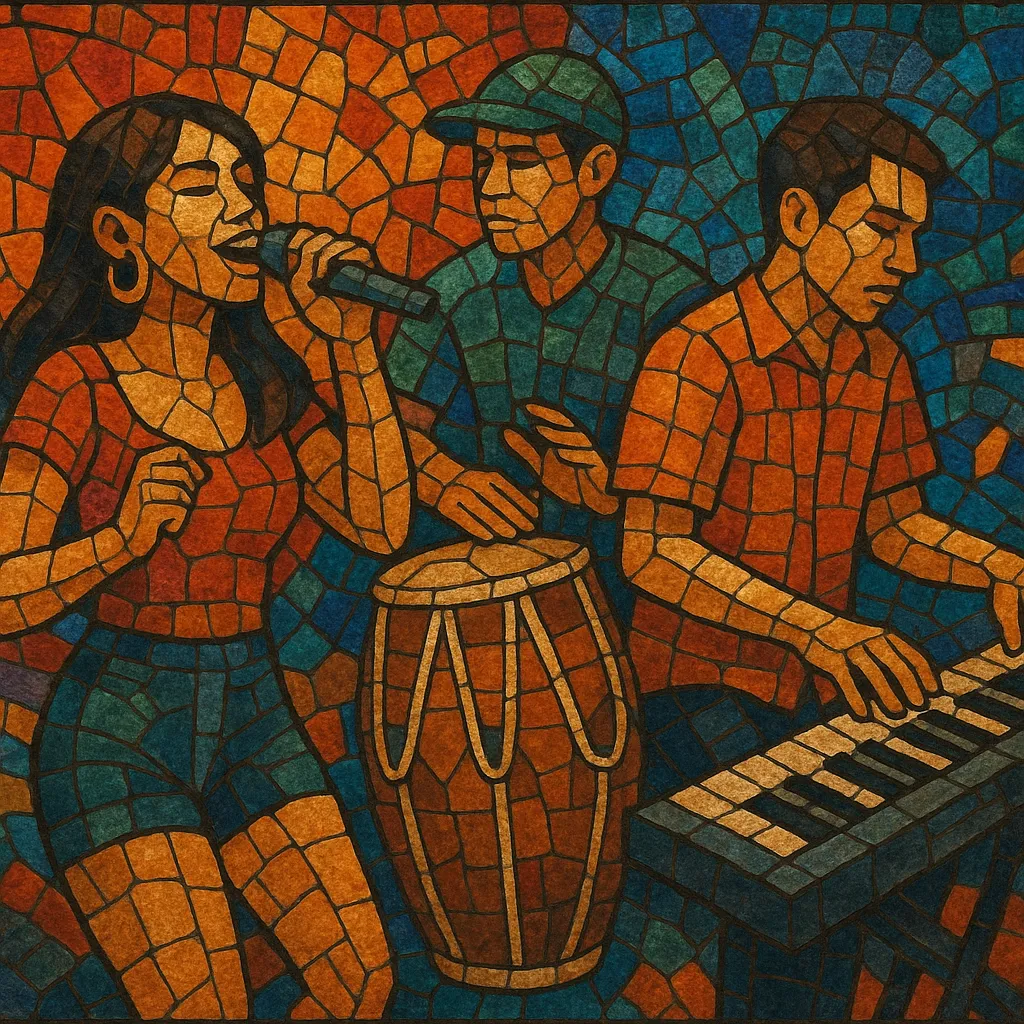Koplo (often called "dangdut koplo") is a high-energy, club-ready evolution of Indonesian dangdut that emerged from East Java in the early 2000s.
It is defined by a faster tempo, driving "kendang koplo" drum patterns (influenced by Sundanese jaipongan), and lively organ/keyboard harmonies that support sing-along melodies. Performances are highly participatory and dance-focused (goyang), with call-and-response between singer, band, and crowd.
Lyrically, koplo keeps the heart of dangdut—romance, everyday life, longing—while its arrangements push toward pop hooks and rhythmic breakdowns suited to large outdoor stages and viral remixes. In the 2010s–2020s it crossed into mainstream Indonesian pop via "pop koplo" and became a staple of DJ remixes (“DJ koplo”).
Dangdut’s nationwide popularity and East Java’s vibrant orkes Melayu scene laid the groundwork for a faster, dance-forward variant. Local bands began intensifying rhythms and experimenting with kendang patterns inspired by Sundanese jaipongan and regional gamelan feel, while borrowing pop-like hooks.
Around the early 2000s, East Javanese groups standardized the "kendang koplo" groove—faster tempi, double-time fills, and interlocking patterns between drum kit and kendang. Inul Daratista’s showmanship and signature dance (goyang ngebor) helped catapult koplo into the national spotlight, igniting debate and drawing massive audiences.
The style’s energetic stagecraft sparked censorship debates in the mid-2000s, but sustained grassroots demand at weddings, town fairs, and dangdut panggung events solidified koplo’s status. Orchestras like OM Sera, OM Monata, and OM New Pallapa became regional powerhouses, refining live sound and expanding repertoire.
Singers such as Via Vallen, Nella Kharisma, Tasya Rosmala, and a wave of East/Central Javanese vocalists popularized smoother, radio-friendly "pop koplo." The style fused contemporary pop harmony and polished production with the unmistakable koplo beat, taking over charts and TV variety shows.
Short-video platforms amplified koplo’s reach. Producers released “DJ koplo” edits that blend koplo percussion with EDM aesthetics, while Pop Jawa stars (e.g., Denny Caknan, Happy Asmara) regularly use koplo grooves. Koplo now functions as both a live-band tradition and a remixable rhythmic template across Indonesian popular music.


